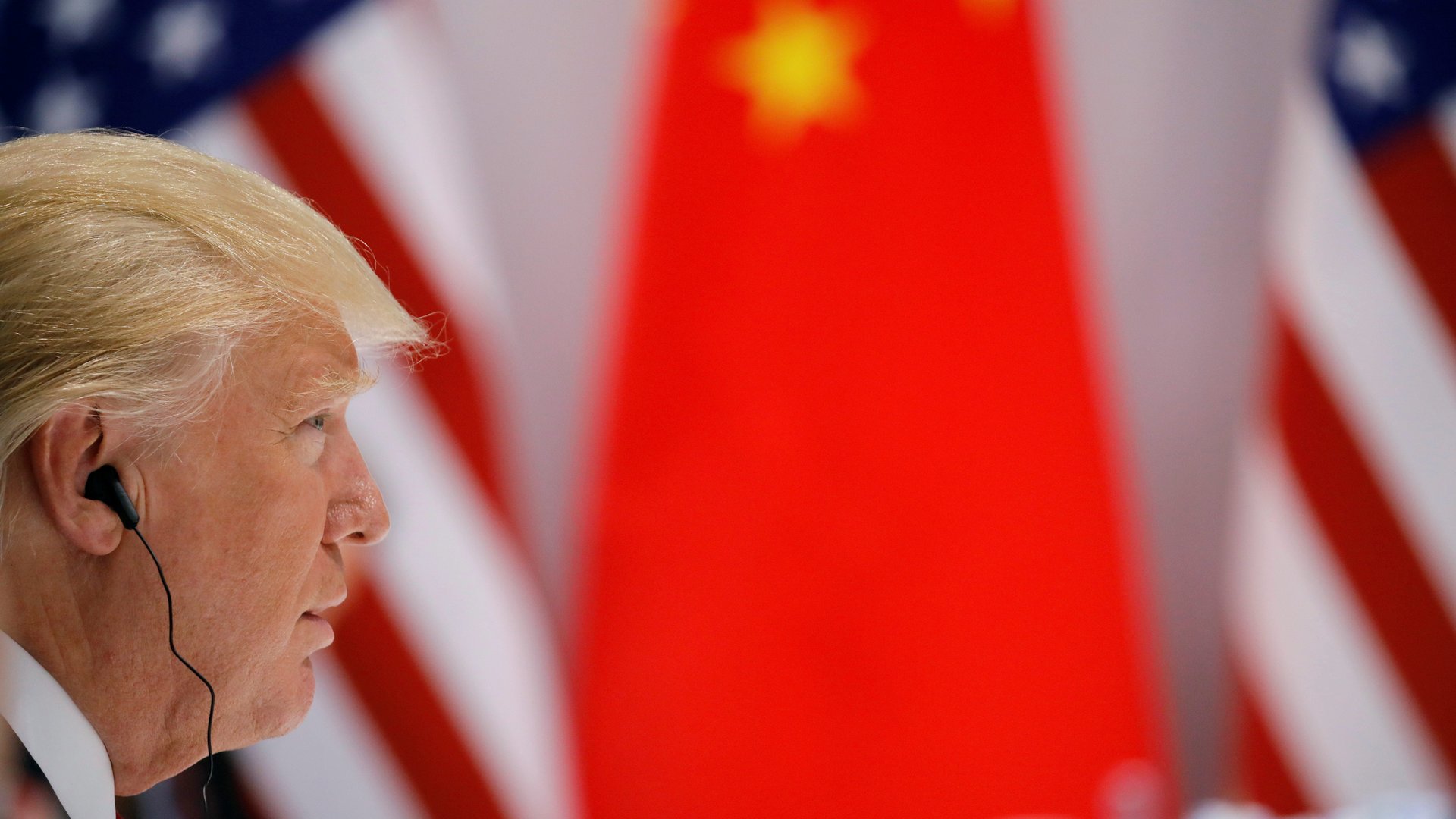The four charts you need to understand Trump’s attacks on the Chinese economy
Donald Trump is kicking off an Asia tour next week that includes a two-day state visit to China starting Nov. 8. At the top of the agenda for his meeting with Chinese president Xi Jinping is, of course, North Korea and trade—two items that, in Trump’s mind, can be traded against each other.


Donald Trump is kicking off an Asia tour next week that includes a two-day state visit to China starting Nov. 8. At the top of the agenda for his meeting with Chinese president Xi Jinping is, of course, North Korea and trade—two items that, in Trump’s mind, can be traded against each other.
With respect to trade, Trump sees China as being engaged in all sorts of unfair practices, among them dumping exports at unnaturally low prices, stealing Americans’ hard-earned intellectual property, and setting high regulatory barriers for foreign businesses.
In 2013, China unveiled economic reforms that would supposedly address such issues. But it hasn’t followed through, according to a study published this week by the Asia Society Policy Institute (ASPI), a New York-based nonprofit. The report identifies 10 key areas targeted by the reforms, and concludes that in nine—including trade, competition, and cross-border investment—there has been little or no progress, based on data made available from official Chinese sources.
Some of the themes highlighted in the report echo Trump’s concerns on US trade with China. The four charts below, created using data from the report, highlight the difficulty in finding common ground in the complicated relationship between the two nations.
High protection from foreign imports
Trump this week called the US trade deficit with China, amounting to roughly $300 billion, “embarrassing” and “horrible.” But it is not easy to narrow that gap given China’s high tariff barriers to imports. The ASPI tracked the import-to-GDP ratios of four categories of highly protected goods and services, and turned them into indexes gauging trade liberalization progress. In the chart below, the higher the score, the higher the import count relative to China’s GDP in the given quarter. The upshot: China’s opening up of trade remains largely stalled.
Breaking things down, the agricultural goods index reflects China’s increasing openness to meet imports over time, the ASPI notes, but it trended down in the second quarter. The dip occurred despite US beef exports to China—having been banned since 2003—resuming in the same period. Meanwhile, Chinese imports of protected manufactured goods have continued to fall relative to GDP.
Overcapacity spilling into other countries
China has pledged to deal with production overcapacity in heavy industries such as aluminum and steel. But the ASPI found that Chinese exports are surging in sectors with overcapacity, effectively spilling the nation’s supply surpluses into global markets. That’s because, as the ASPI explains, initial cuts in those industries have caused price spikes that have in turn incentivized Chinese producers to pump out more products. In other words, the ASPI notes, “things may get worse before they get better.”
The Trump White House, for its part, has launched two special investigations into whether US aluminum and steel imports, particularly from China, pose a danger to the country’s national security. In a separate move last month, the US slapped anti-dumping duties of up to 162% on Chinese aluminum foil, citing unfairly low prices.
Differential treatment of foreign and domestic investors
In September, Trump blocked a China-backed private equity firm from buying Oregon-based Lattice Semiconductor over national security concerns. Beijing complained that it amounted to protectionism.
But China itself is hardly innocent when it comes protectionism. Authorities there review mergers in cases involving foreign investors far more than ones involving purely domestic actors, the ASPI found, citing data from the the nation’s commerce ministry. In the second quarter, the ASPI notes, the rate of scrutiny for foreign investors was six times higher than that for domestic firms, versus a smaller gap last year. The Chinese government’s role in the economy “remains heavily interventionist, picking which state-owned enterprises should be combined, often without effective competition policy review,” the ASPI says.
One-way trade flows in IP—at least for now
Another area where Trump consistently lashes out against China is the alleged theft of American intellectual property. In August, he invoked a rarely used trade law to probe into such practices, which could result in the US imposing punitive tariffs on imports from China. Ironically, this route might have been unnecessary had Trump not pulled the US out of the Trans-Pacific Partnership—a trade pact China probably would have joined later—on his third day in office.
In a reality check, the ASPI found that both Chinese payments abroad and receipts for IP rights increased over the past five years, with each setting new highs in the second quarter. Still, for the most part, it is foreign countries that are providing IP-related services for China, not vice versa.